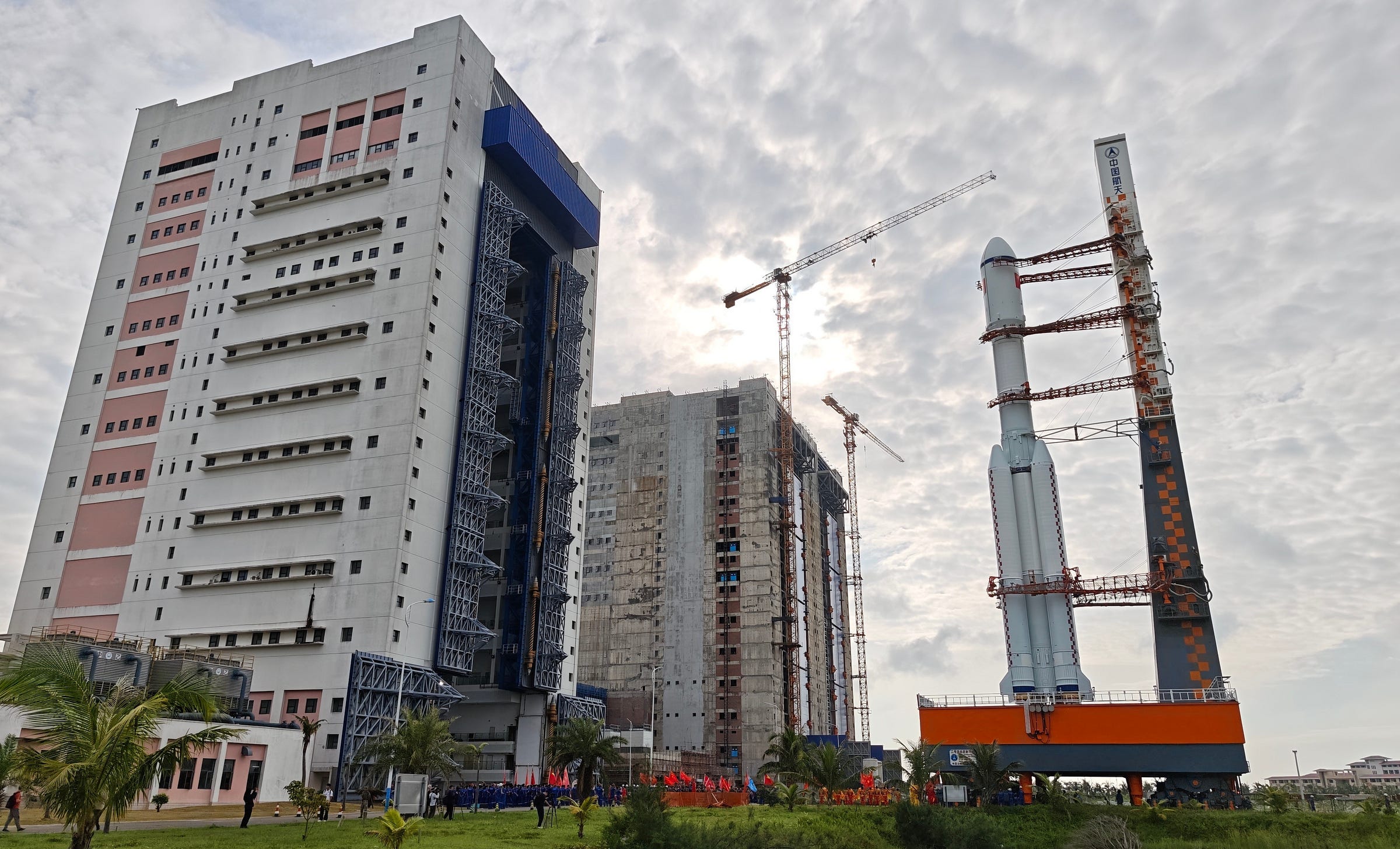Tianzhou-9 Prepares for Launch!
At Wenchang a Long March 7 has rolled out.

Earlier today, July 12th, A Long March 7 rolled out from its assembly building atop of a mobile launch platform at the Wenchang Space Launch Site to Launch Complex 201, with the Tianzhou-9 cargo resupply spacecraft within the rocket’s fairing.
At present, the Long March 7 launch vehicle (designated Y10), Tianzhou-9 spacecraft, and launch complex systems are in good condition. Before launch, joint tests are planned to ensure success for a launch to low Earth orbit, before a rendezvous with the Tiangong Space Station.
Currently, the launch of the Tianzhou-9 resupply mission is planned to take place at around 05:40 am China Standard Time on July 15th (21:40 pm Universal Coordinated Time on July 14th). Weather at the launch site in July can be rather rainy, but that is not expected to be a major limitation for launch, with a technician telling CGTN:
“The rocket has strict waterproof measures. We have successfly launched in the rain before, and several past missions have proven our design is reliable.“
In the hours after launch, the resupply spacecraft will dock to the aft port of the Tianhe module, which was recently vacated by Tianzhou-8.
Cargo currently loaded onboard Tianzhou-9 includes food and other consumables for Chen Dong (陈冬), Chen Zhongrui (陈中瑞), and Wang Jie (王杰) currently onboard for Shenzhou-20 and the future Shenzhou-21 crews, alongside scientific experiments that will be performed over the next few months and years. Propellants to refuel Tiangong’s maneuvering and attitude control thrusters are set to be delivered too. Two new Feitian (飞天航天服) spacesuits are also being delivered, as spacesuits used as recently as late June have undergone operational life extensions for use beyond their initial design life, along with improvements for microgravity exercise equipment.


The Tianzhou (天舟) spacecraft is an uncrewed autonomous cargo spacecraft developed by the China Aerospace Science and Technology Corporation and its subsidiaries to resupply the Tiangong Space Station. Tianzhou’s design is derived from China’s first space stations, Tiangong-1 and Tiangong-2, and is capable of delivering 7,400 kilograms of cargo to their space station and weighs 14,000 kilograms. The total volume of cargo can be up to forty cubic meters.
The spacecraft does not possess any way to return cargo back down to Earth and is destroyed upon re-entry. All Tianzhou spacecraft have been launched atop of the Long March 7 rocket. Tianzhou is also capable of transporting pressurized, semi-pressurized, and unpressurized cargo depending on mission needs. In its current design, the spacecraft generates electrical power using two solar panels. Propelling the spacecraft during orbital maneuvers are four engines generating approximately 200 kilograms of thrust.


